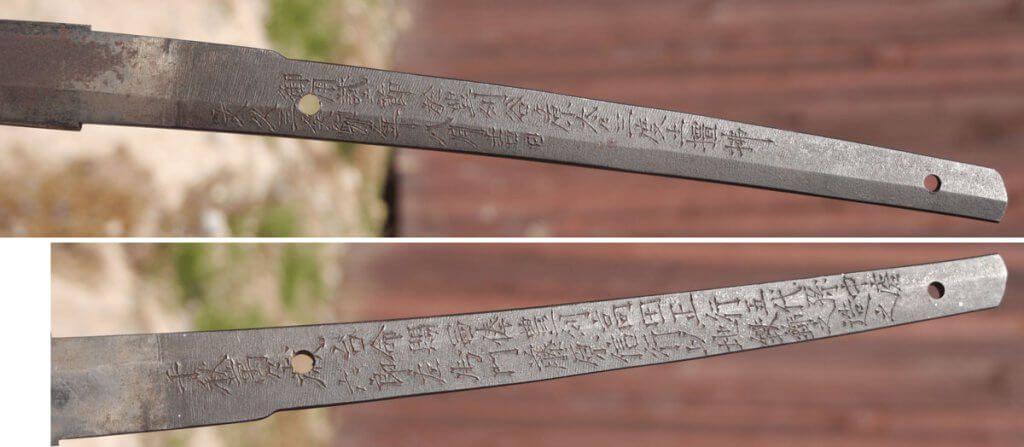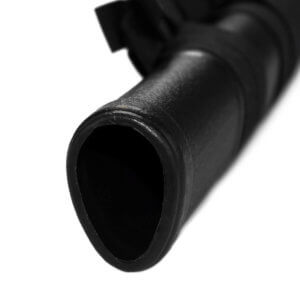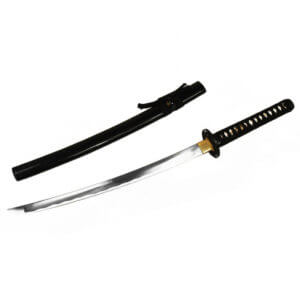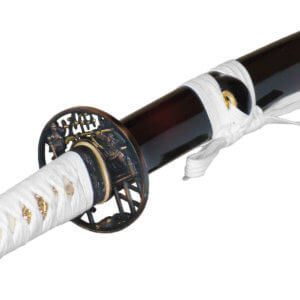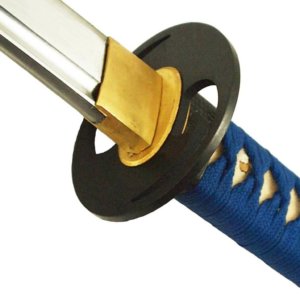Why is the tang of a katana signed?
The signature is a kind of signature of a Japanese swordsmith with which he marks his work on the blade tang (nakago). This signature is called Mei in Japanese and is of interest to sword collectors and a field of knowledge in its own right. These Japanese characters are often an indication of the judgement of a genuine Japanese katana, the Nihonto is called.
But deciphering them is sometimes difficult and even misleading. More on this later in the text.
Entire reference books are filled with examples of different swordsmiths from different eras.
In addition to the "signature", there is also additional information that can be immortalised on the tang. For example, the time of manufacture and the place of manufacture.
However, the name of the buyer can also be engraved if the customer so wishes.
There are also unusual markings that include test results, for example. Some of these are even incorporated into the blade tang in gold lettering.
Are all katana and old Japanese swords signed?
Not all genuine katana and other samurai swords are signed. There have been different trends in this respect over time. Very early works, for example, are rarely signed.
There were also blacksmiths who hardly ever signed their work because they considered their blades to be basically unmistakable from the blades of other blacksmiths.
Some blacksmiths only labelled their best work with the characters.
Blades were usually signed if the person who commissioned the sword so wished.
So there are numerous reasons why blade angling at Nihonto may or may not be labelled. Nowadays manufactured Japanese katana are usually signed because this is generally expected by today's buyers. Also some modern produced Katana have an inscription on the tang. On inexpensive swords, this usually serves to reproduce the characteristics of a real katana and does not have the function of characterising the work of a first-class master smith, as is the case with Japanese master swords.
The signature alone should never be used as the sole characteristic for assessing the quality of a sword, as these are often forged and applied afterwards to enhance the value of a sword.
Ideally, the quality and origin of a sword is determined by inspection. This process is called Kantei. If a signature is present, it is pleasing if it is consistent with the assumptions made.
What types of blade signatures are there?
Due to the many different types of labelling, some of which we have already described above, there are almost countless designations in this context.
However, there are some terms that you will quickly come across when dealing with Nihonto (real Japanese swords). We would like to explain these terms here:
Mumei - Blades without "signature"
Strictly speaking, it is not a type of signature, because mumei means that there is no inscription.
Some katana and other blades were not signed at all. This can have different reasons as described above. The name for this is Mumei.
Gimei - the forged signature
Gimei or nisemei is the term for a signature that was applied afterwards and does not originate from the smith of the sword.
This was usually done to disguise the origin of a sword and increase its value.
It does not necessarily mean that it is an inferior sword if a forged signature is present.
They are often good pieces of work, but they should be associated with an even better swordsmith.
For example, there are many blades with the forged signature of Masamune that are in circulation because he is generally regarded as one of the best Japanese swordsmiths of all time.
Omote Mei
Marking on the "outside" of the blade, sometimes also called "front" or "front". The outside is defined by the way the sword is worn on the belt. The omote side is the side facing away from you.
The name of the swordsmith is usually immortalised on this side if the sword has a signature.
Ura Mei
Designation for characters on the "inside", "back" or "rear" of the blade. In contrast to the omote side, ura refers to the side that faces the sword bearer when mounted on the belt.
This often contains secondary information such as the additional information about the sword mentioned above.
Katana Mei
This is the typical signature on a genuine Japanese katana. The positions are chosen so that the blacksmith's signature is placed on the outside and secondary information on the inside of the blade tang when the sword is worn on the belt (obi) with the edge pointing upwards.
Tachi Mei
This is the typical signature on a genuine Japanese tachi. The positions are chosen so that the blacksmith's signature is placed on the outside and secondary information on the inside of the blade tang when the sword is worn with the edge facing downwards on the belt.
Saidan Mei
Also known as Kinzoganmei or Tameshimei. This inscription documents the results of cutting tests with a blade on the tang of the sword.
Zogan Mei
This is the term for characters that have an inlay made of a different metal. Gold was generally used for this, but other materials such as silver or copper were also used.
Image source for the image in this article: By J.Smith - Own work, CC BY-SA 2.5, https://commons.wikimedia.org/w/index.php?curid=1638792

